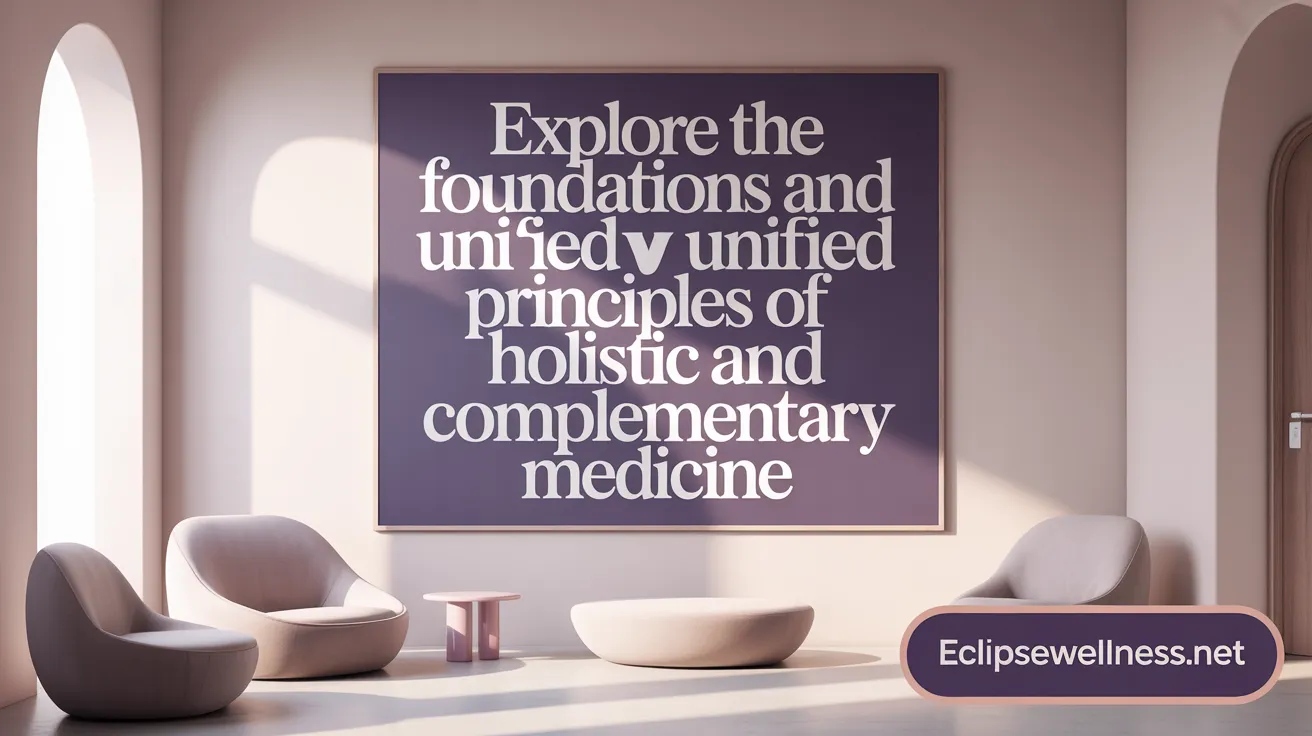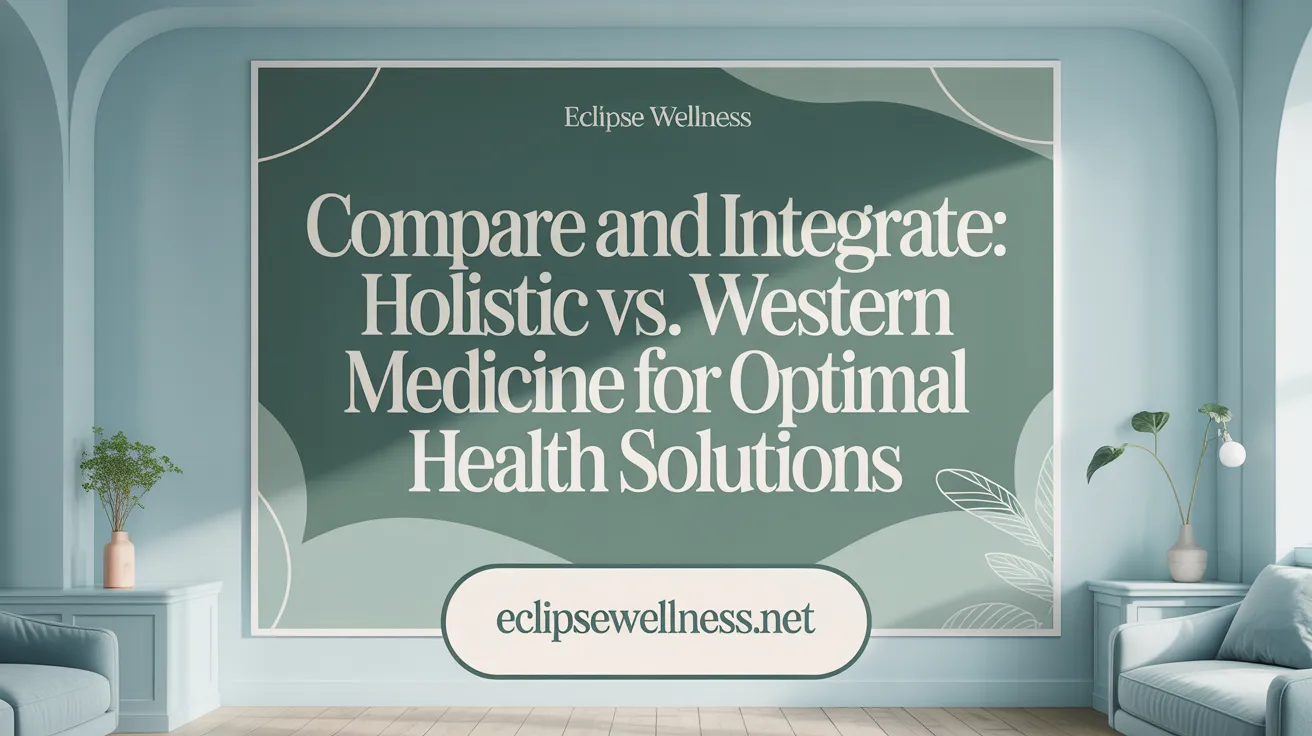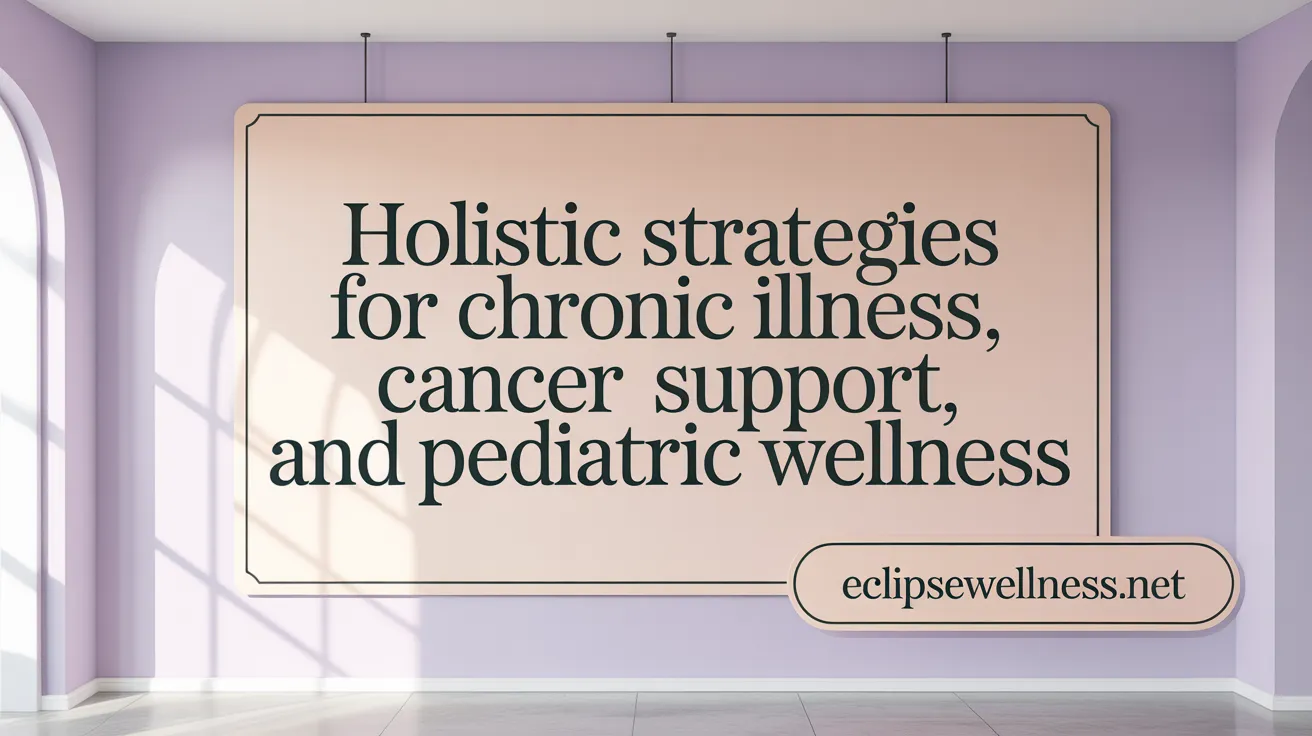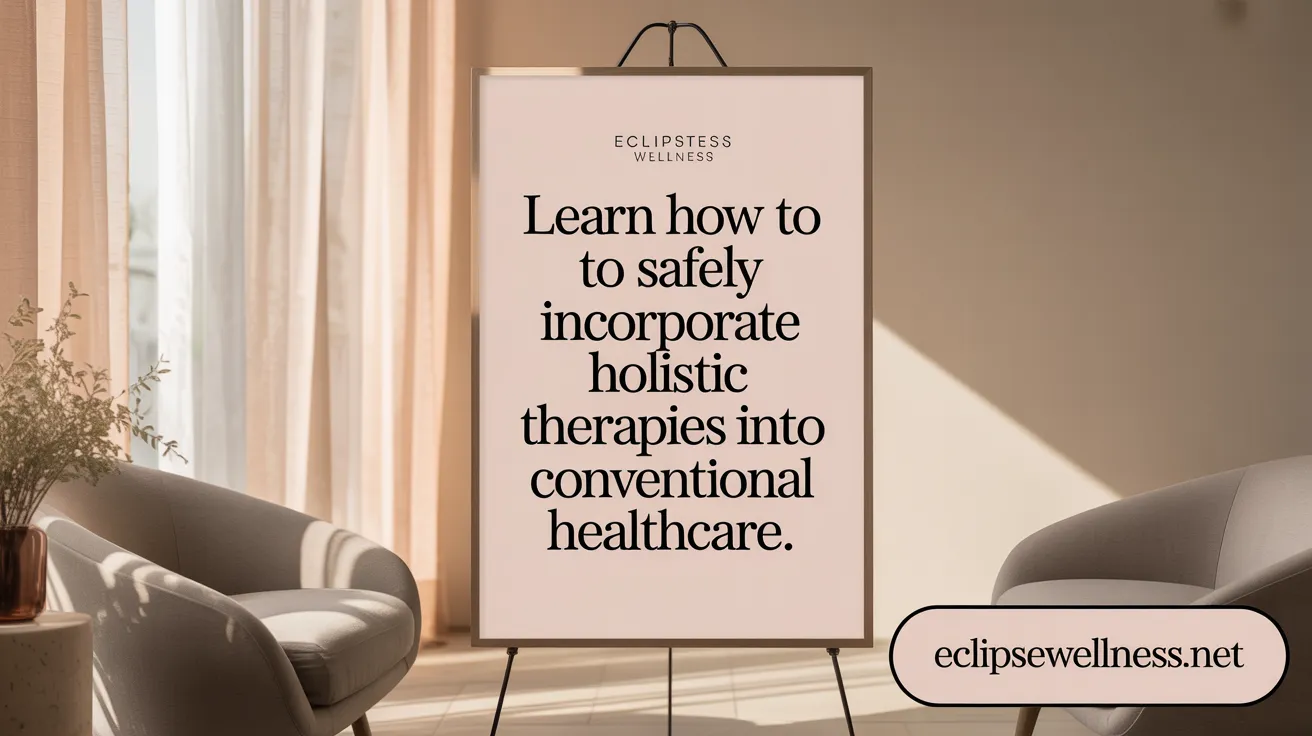Understanding the Whole Person in Modern Healthcare
Holistic medicine as a complement to conventional care offers a profound rethinking of health, emphasizing the whole person—body, mind, and spirit. In an era of advanced medical technology, integrating holistic approaches with traditional Western medicine promises more personalized, patient-centered care. This article explores foundational philosophies, therapeutic practices, scientific support, practitioner roles, and the growing synthesis shaping today’s integrative health landscape.
Core Principles and Philosophies of Holistic, Complementary, and Integrative Medicine
 Holistic, complementary, and integrative medicine are health care philosophies centered on caring for the whole person—body, mind, and spirit—rather than just addressing specific symptoms or diseases. Holistic medicine emphasizes personalized care that considers physical, emotional, mental, social, and spiritual factors influencing health. It promotes understanding the interconnectedness of all aspects of well-being and encourages approaches that support the body’s innate healing abilities.
Holistic, complementary, and integrative medicine are health care philosophies centered on caring for the whole person—body, mind, and spirit—rather than just addressing specific symptoms or diseases. Holistic medicine emphasizes personalized care that considers physical, emotional, mental, social, and spiritual factors influencing health. It promotes understanding the interconnectedness of all aspects of well-being and encourages approaches that support the body’s innate healing abilities.
Complementary medicine involves using non-conventional therapies alongside standard medical treatments. These therapies, such as acupuncture, herbal remedies, meditation, and massage, are often chosen for their natural and less invasive qualities. When supported by scientific research showing safety and efficacy, they enhance conventional care through a holistic approach.
Integrative medicine combines both conventional medical practices—like surgery and pharmaceuticals—with evidence-based complementary therapies. This approach aims to treat the whole person, addressing the root causes of health issues while also focusing on prevention and health maintenance.
All three philosophies share common principles: they prioritize natural interventions that are minimally invasive, respect cultural diversity in healing practices, and emphasize patient-centered care. This means involving patients actively in decision-making, tailoring treatments to individual needs, and honoring cultural traditions and beliefs.
At their core, these approaches advocate for prevention, wellness, and the body's natural capacity to restore health. They aim to create a healthcare model that is respectful, holistic, and integrative, combining the best of modern science with traditional wisdom to promote overall well-being.
Holistic Medicine versus Conventional Western Medicine: Differences and Synergies

How does holistic medicine differ from, and relate to, conventional Western medical approaches?
Holistic medicine offers a distinctive approach by focusing on treating the whole person—body, mind, and spirit—rather than just targeting specific symptoms or diseases. Unlike Modern Western medicine, which primarily employs research-based techniques such as pharmaceuticals, surgery, and radiation aimed at specific organ systems, holistic practices emphasize prevention, natural therapies, lifestyle adjustments, and addressing root causes to promote overall wellness.
In Western medicine, the goal is often rapid symptom relief and disease eradication through targeted interventions, supported by clinical trials and scientific evidence. Holistic medicine, however, advocates for a broader view that integrates conventional treatments with complementary therapies like acupuncture, herbal medicine, meditation, and nutrition counseling. These therapies aim to restore balance, strengthen the body's innate healing abilities, and improve mental and emotional well-being.
Despite their different philosophies, the two approaches can work synergistically. Many holistic practitioners are trained to collaborate with conventional healthcare providers, combining evidence-based practices with natural interventions. This integrative approach strives for personalized care that respects the unique needs of each patient, ultimately enhancing health outcomes by merging scientific rigor with a focus on whole-person health.
Therapeutic Modalities: Practices Commonly Used in Holistic and Complementary Medicine
Holistic and complementary medicine approaches include a diverse array of therapies aimed at treating the whole person—body, mind, and spirit. These practices address various aspects of health and are often integrated to optimize healing and wellness.
Many therapies focus on body-based interventions like massage, chiropractic adjustments, reflexology, and cupping. These manipulative techniques are designed to improve circulation, relieve tension, and promote physical relaxation.
Mind-body interventions are also prominent, involving practices such as meditation, yoga, tai chi, relaxation techniques, and guided imagery. They help reduce stress, enhance mental clarity, and support emotional health.
Energy therapies like Reiki, therapeutic touch, and acupuncture focus on balancing energy flows within or around the body. Such therapies aim to restore harmony and promote natural healing by manipulating the biofield or electromagnetic fields.
Herbal medicines and dietary supplements—such as botanicals, vitamins, minerals, and probiotics—are widely used to support bodily functions and manage chronic illnesses. These natural remedies are chosen carefully, often based on traditional knowledge and emerging scientific evidence.
Expressive therapies, including art therapy, music therapy, dance, and support groups, foster emotional expression and mental well-being. They are valuable complements to physical treatments, especially in managing stress, depression, and anxiety.
Together, these modalities emphasize a holistic perspective, focusing on the interconnectedness of physical, mental, and spiritual health. While many practices are supported by scientific research, it is essential to consider individual suitability and consult healthcare professionals to ensure safe and effective use.
Evidence and Safety: Scientific Evaluation of Holistic and Complementary Practices
A growing body of scientific research supports the efficacy and safety of several popular holistic and complementary therapies. For example, acupuncture has been extensively studied, with numerous clinical trials and systematic reviews indicating its effectiveness in managing chronic pain conditions such as back pain, osteoarthritis, and tension headaches. Herbal medicines like ginger and ginseng have also demonstrated benefits in reducing nausea and improving energy, respectively, backed by multiple studies. Mind-body interventions, including meditation and yoga, have shown to help lower blood pressure, reduce anxiety, and improve overall mental health.
Despite these promising findings, the scientific evidence for many CAM practices remains variable in quality. Some therapies lack rigorous clinical trials, and results can be influenced by small sample sizes, placebo effects, or inconsistent treatment protocols. The safety of herbal and dietary supplements is a particular concern, as adulteration, contamination, or improper dosing can pose risks. Therefore, regulatory oversight and practitioner qualifications are crucial to ensure safe and effective use of CAM products.
Standardization and quality control of herbal medicines and supplements are essential but are often lacking outside of strict regulatory environments. Many countries have begun regulating certain practices, such as Ayurveda or homeopathy, with licensing and certification to improve safety standards. Nevertheless, healthcare providers and patients should remain cautious, thoroughly researching and consulting qualified practitioners before initiating treatments.
Research efforts are ongoing to scientifically validate the benefits and safety of various therapies. Initiatives include large-scale clinical trials by government agencies and international organizations aiming to integrate evidence-based CAM into mainstream healthcare. Such validation is vital not only for patient safety but also for ensuring that holistic practices contribute reliably to health and well-being.
Holistic Practitioners: Education, Training, and Roles in Patient Care
 Holistic medicine involves a diverse group of practitioners dedicated to treating the whole person—body, mind, and spirit. These professionals include holistic doctors, naturopathic physicians, acupuncturists, holistic nurses, wellness coaches, and other trained therapists. Each practitioner follows their own pathway of education and certification to gain expertise.
Holistic medicine involves a diverse group of practitioners dedicated to treating the whole person—body, mind, and spirit. These professionals include holistic doctors, naturopathic physicians, acupuncturists, holistic nurses, wellness coaches, and other trained therapists. Each practitioner follows their own pathway of education and certification to gain expertise.
Holistic doctors and naturopathic physicians often attend accredited naturopathic medical schools such as Bastyr University or the National University of Natural Medicine (NUNM). Their training typically spans four years, including coursework in herbal medicine, homeopathy, traditional Chinese medicine, and energy therapies, along with clinical practice. They are usually licensed after passing standardized licensing exams like the NPLEX, which assess their knowledge of natural and holistic health sciences.
Acupuncturists generally complete specialized degree programs focusing on traditional Chinese medicine, often requiring three to four years of study, along with licensing examinations. Holistic nurses and wellness coaches might pursue additional certifications through professional organizations, such as the American Holistic Nurses Certification Corporation, which offers credentials recognizing their expertise in holistic patient care.
Certifications from bodies like the American Association of Naturopathic Physicians (AANP), the American Nutrition Association (ANA), and the International Association of Near-Infrared Light Therapy (IANHP) validate practitioners’ credentials and ensure they meet industry standards.
Effective integration of holistic practitioners with conventional healthcare providers relies on shared treatment philosophies, respecting patient comfort, and focusing on personalized, patient-centered care. This collaborative approach fosters team-based healthcare, where practitioners work together to address physical, emotional, and spiritual health issues.
In summary, holistic practitioners combine formal education, specialized training, and certification, positioning them as valuable members of a comprehensive healthcare team. Their diverse qualifications support a personalized, respectful approach aimed at improving overall well-being and patient satisfaction.
More info on training and qualifications of holistic medicine practitioners
Holistic Medicine in Managing Chronic Diseases, Cancer, and Pediatric Care

What is the role of holistic medicine in managing chronic illnesses, autoimmune diseases, cancer care, and pediatric health?
Holistic medicine plays a vital part in managing various health conditions by integrating evidence-based complementary and alternative therapies with conventional treatments. In the context of chronic illnesses and autoimmune diseases, holistic approaches such as nutritional support, physical activity, stress management, and mind–body therapies—like meditation and yoga—aim to improve overall health, reduce symptoms, and support immune function.
For cancer care, holistic medicine emphasizes symptom relief and quality of life enhancement. Children undergoing cancer treatments, for instance, often experience nausea, fatigue, pain, and anxiety. Complementary therapies, including massage, acupuncture, guided imagery, and herbal medicines, can help alleviate these symptoms, providing comfort and emotional support without adverse effects.
In pediatric health, holistic strategies support healthy development and manage symptoms associated with chronic or acute conditions. Techniques such as behavioral therapies, nutritional counseling, and gentle manual therapies can foster physical growth, emotional stability, and resilience. For more about holistic care in children, see holistic care for kids vs traditional methods.
Effective communication between healthcare providers and caregivers is crucial to ensure safety and appropriate integration of therapies. Proper guidelines and pediatric-specific research are needed to optimize treatment plans. For guidance on communication and integration, refer to effective interprofessional communication.
Overall, holistic medicine seeks to complement standard medical treatments while addressing the comprehensive needs of children and adults—physical, emotional, and psychological—fostering a better quality of life and emotional well-being by integrating complementary and conventional treatments.
Ensuring Safety and Effective Integration of Holistic Therapies within Healthcare Systems
 The incorporation of holistic and complementary therapies into mainstream healthcare systems underscores the importance of thorough patient-provider communication. Patients should proactively disclose all therapies, supplements, and practices they are using to ensure safe, coordinated care. Qualified practitioners—such as licensed naturopathic doctors, acupuncturists, or herbalists—should have verifiable credentials and experience relevant to their therapies. Choosing therapies supported by scientific evidence and regulated by health authorities, such as those approved or monitored by the FDA, significantly minimizes risks. Importantly, patients need to evaluate whether therapies have documented safety profiles, understand potential interactions with conventional medications, and avoid unproven or potentially harmful treatments.
The incorporation of holistic and complementary therapies into mainstream healthcare systems underscores the importance of thorough patient-provider communication. Patients should proactively disclose all therapies, supplements, and practices they are using to ensure safe, coordinated care. Qualified practitioners—such as licensed naturopathic doctors, acupuncturists, or herbalists—should have verifiable credentials and experience relevant to their therapies. Choosing therapies supported by scientific evidence and regulated by health authorities, such as those approved or monitored by the FDA, significantly minimizes risks. Importantly, patients need to evaluate whether therapies have documented safety profiles, understand potential interactions with conventional medications, and avoid unproven or potentially harmful treatments.
Selecting reputable products and services, maintaining transparency with healthcare providers, and practicing informed consent are critical safety measures. Monitoring outcomes and adjusting treatments based on professional advice help prevent adverse effects. Since dietary supplements and herbal medicines are often not strictly regulated, caution and scrutiny are imperative. Above all, ensuring safety involves a collaborative effort between patients and healthcare professionals, with a focus on evidence-based practices.
Integrating holistic medicine into conventional healthcare also presents challenges. These include philosophical differences, inconsistent regulations, and issues related to reimbursement and insurance coverage. Overcoming these barriers requires the development of standardized criteria for practice, improved regulation, and enhanced education of healthcare providers and patients. Such efforts foster interdisciplinary collaboration—bringing together medical doctors, holistic practitioners, and researchers—to develop comprehensive treatment plans rooted in scientific validation.
Opportunities for integration include addressing gaps in chronic disease management, mental health, pain relief, and preventive care. CAM therapies such as acupuncture, meditation, and massage have demonstrated benefits in reducing symptoms and improving patient satisfaction. When supported by rigorous research and proper regulation, these therapies can complement conventional treatments effectively, offering more patient-centered, culturally respectful, and holistic care.
Overall, the safe and effective integration of holistic therapies demands a balanced approach—prioritizing evidence, safety, and collaboration—aimed at delivering optimal health outcomes. Continued research, regulatory oversight, and professional education are essential to harness the full potential of these therapies within mainstream healthcare systems.
Embracing a Unified Pathway to Health and Healing
Holistic medicine, when integrated thoughtfully with conventional care, enriches healthcare by honoring the complexity of human health—physical, emotional, mental, and spiritual. Grounded in time-honored philosophies and increasingly supported by scientific evidence, holistic and complementary therapies offer compassionate, personalized approaches that empower patients and enhance traditional medical treatments. With ongoing research, improved practitioner training, and collaborative healthcare models, holistic medicine holds the promise of transforming patient care into a more comprehensive, effective, and satisfying experience. Patients and providers alike benefit from embracing this integrative pathway toward well-being, emphasizing prevention, healing, and whole-person health.
